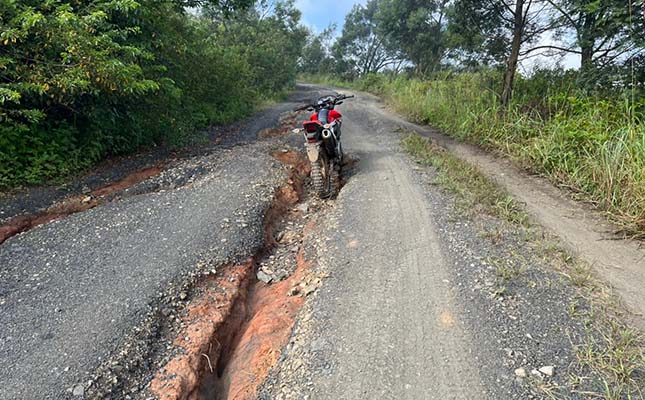
Photo: Kwanalu
The extensive flood damage to infrastructure in KwaZulu-Natal following the recent torrential rain is a severe blow for the province’s agricultural industry.
PJ Hassard, president of the KwaZulu-Natal Agricultural Union (Kwanalu), told Farmer’s Weekly that the full extent of damage was still being determined.
READ Beat the heat! How to care for livestock in extreme weather
He confirmed, however, that the Midlands and coastal regions seemed to have suffered the worst damage, with the Durban Fresh Produce Market being completely flooded.
“Extensive infrastructural damage in these areas has not only left farmers and agricultural businesses stranded without road access, but is negatively affecting [fuel supplies], which has since been increased to roughly 60% of capacity,” Hassard said.
Sandy La Marque, CEO of Kwanalu, said reports of damage were continuing to stream into the organisation’s office.
READ Lack of rail transport squeezes fertiliser prices
“Kwanalu last week released survey results, which [showed that] poor road conditions were negatively affecting the movement of goods and services, driving up the cost of business, threatening food security and economic growth, while negatively affecting job creation and rural development,” La Marque said.
She stressed that the flooding would exacerbate the situation.
“The recent disaster continues to demonstrate how fragile the agriculture sector is, and the importance of preventative measures, maintenance, economic nodes and corridors being identified and prioritised.”
Justin Chadwick, CEO of the Citrus Growers’ Association of Southern Africa, said in his latest newsletter that he did not foresee that “there would be containers drifting down the N2 highway” when he advised growers to expect the unexpected in 2022.
According to him, the greatest concern for those exporting produce from the Port of Durban was that half of Bayhead Road, the feeder road to the Durban Container Terminal, had been washed away, while the integrity of the rest of the road “was questionable”.
At the time of publishing, most roads leading to the cold storage facilities at the port were still intact.
President Cyril Ramaphosa announced on Monday (18 April) that a National State of Disaster had been declared to ensure an effective response to the current extreme weather events.
He said all parts of KwaZulu-Natal had been affected, with the entire eThekwini Metropolitan Municipality, as well as the iLembe, Ugu, King Cetshwayo and uMgungundlovu district municipalities being worst affected.
Heavy rainfall and flooding with resultant damages were also experienced in the Eastern Cape, particularly in the Alfred Nzo, Joe Gqabi and OR Tambo district municipalities.
He said government would respond to the disaster in three phases. The first would be focussing on immediate humanitarian relief, the second on stabilisation and recovery, and the third on reconstruction and rebuilding.
The latter would not only involve the construction and repair of major infrastructure, but would also involve the construction of houses in suitably-located areas, and the implementation of measures to protect residents of these areas from future adverse weather events.
Roughly 1 300 road repair projects had been identified, according to Ramaphosa, with the South African National Roads Agency immediately focussing on repairing damage to the N2 and N3 highways.
Ramaphosa said that great progress had been made in restoring operations at the Port of Durban, through the opening of alternative routes for trucks to access the port terminals, and the cleaning up of debris in the port.
To date, more than 440 people had lost their lives in KwaZulu-Natal, while almost 50 were still missing or unaccounted for.









